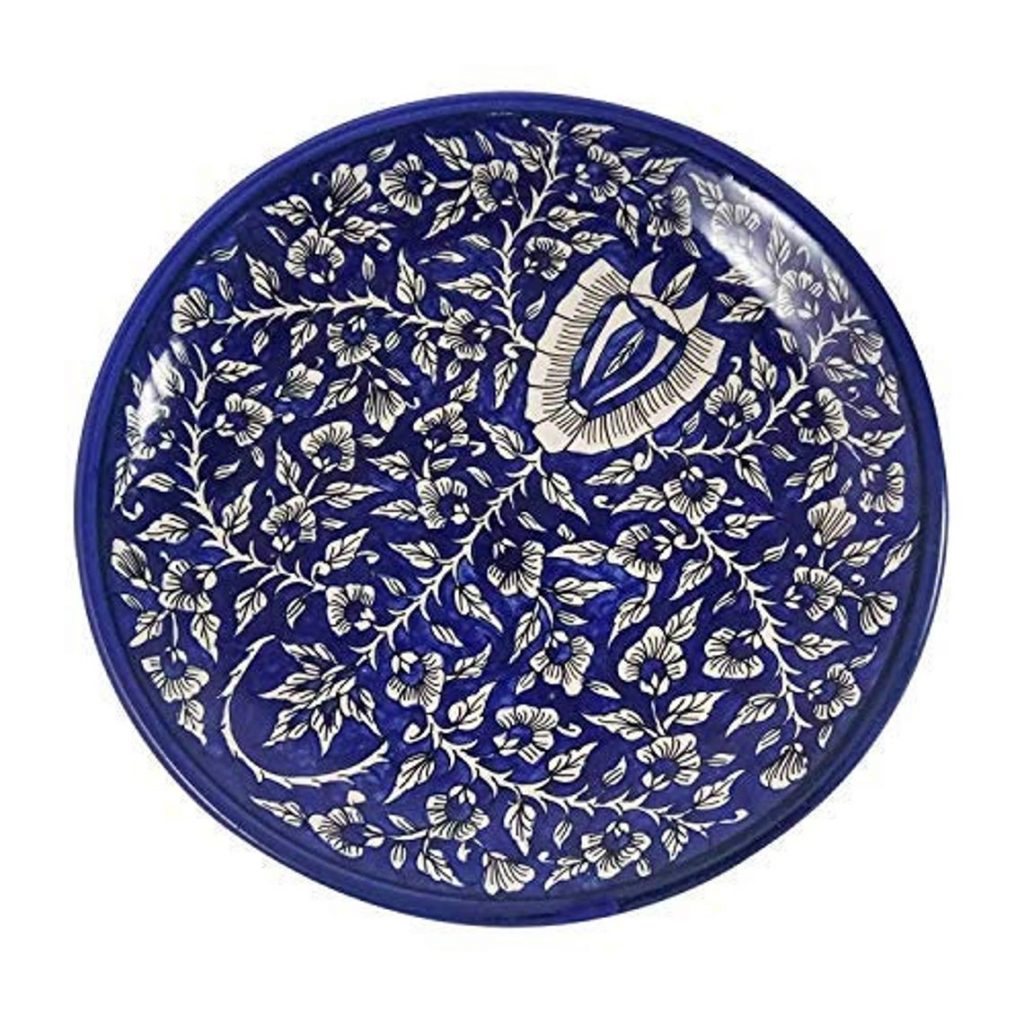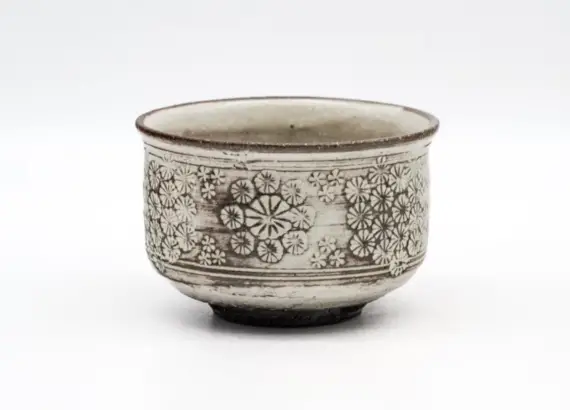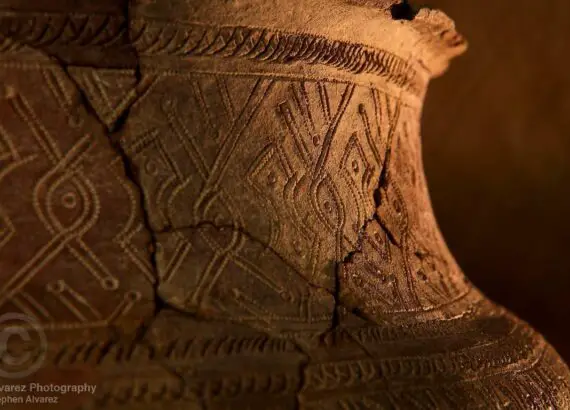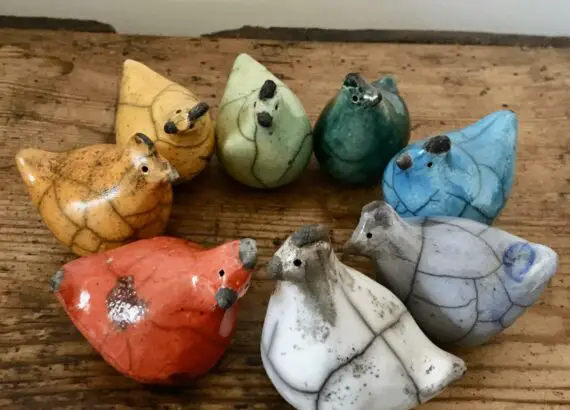Everything You Need to Know about Khurja Pottery

Pottery is one of the oldest human inventions. One of such is Khurja pottery which has been around for over 500 years. Through its beauty in production and the final product, the relevance of Khurja pottery is still appreciated all over the world today. Khurja pottery is an art form that is native to India, Khurja particularly, from where the name is derived.
The rights in Khurja ceramics works are patented and these rights are protected by the Agreement on Trade-Related Aspects of Intellectual Property Rights (TRIPS). It is listed as “Khurja Pottery” in the Government of India’s GI Act 1999, with registration recognized by the Controller General of Patents, Designs, and Trademarks.
Table of Contents
What is Khuja Pottery?
Khurja pottery is a brand of pottery that is unique to the city of Khurja in India. This form of pottery is noted for its integration into the Indian home décor setting and other uses for which it is employed. It is also widely known for its endurance and aesthetic appeal.

History and where Khurja Pottery is made?
Khurja pottery is made in a town called Khurja of Bulandshahr. This is where it started from and due to the products’ popularity, it is now being produced all over the country. The history of Khuja pottery can be traced back to two instances in history.
Khurja pottery was brought from Egypt and Syria about 500 years ago, to India by Afghan King Taimur Lang. based on the other theory, potters migrated to the region (Khurja, India) where they started the trend which has become a worldwide sensation. The art of creating Khurja stoneware can be traced back to the Mughal era, to Emperor Mohammad-bin-reign. Tughlak’s (mid-fourteenth Century).
Baidyanath Saraswati expressed in one of his writings, “Khurja in Bulandshahr is one of the oldest hubs for glazed pottery in India.” “These potters often refer to themselves as Multani Kumhars, implying that their origin is Multan,” he continues.
Most of the pieces on Fabuliv are not conformist to one type of ceramic ware; they use a variety of materials and each has a unique design concept. As noted on Deneen Pottery his is also in line with Dwight Holland‘s view of pottery expressed thus, “There has to be some brainpower involved, some intellectual curiosity, for a potter to be able to build a pot that has life and vitality.”.
The Production Process
Getting the clay ready
All raw materials are blended in a ratio and ground for over 15 hours in a piece of Ball-mill equipment. They keep the ration a trade secret. It is done to achieve a consistent mix of the clay mixture, which is then placed between the pan filter and a clay disc with a radius of 0.75 feet to maintain only the required amount of water content. It’s the end result of the process.
To obtain the superfine clay combination, clay discs are repeatedly run through the Pug-mill machine for the pugging method— the Pug-Archimedes mill’s screw drives the clay in a straight and upward movement. Clay is obtained in two forms: liquid clay and solid clay.
Process of clay molding
For large objects, the molding procedure is used. Vessels, containers, and pots are examples. POP, or Plaster of Paris, is used to create the item’s mold. There are no lumps in the clay because it is incorporated in a blended solution.
Until the cavity is introduced to the mold, the clay product is released into it. To eliminate bubbles and preserve only the needed amount of clay, the mold box is spun smoothly.
Process of smoothing and painting
Shriveled goods are limited to a semi-finish process of polishing with sandpaper to improve the outside surface. Mughal art (ancient art) and conventional art with motifs on the outside finish are two types of ceramic pottery pictures. Mughal art is a traditional craft that is painted with a cobalt or Cb-bluish color and a colorless lead glaze (Pb glazing).
In contrast to traditional art, it entails decorating Khurja ceramics with motifs such as floral or geometric designs.
Process of Glazing
Glazing is a glossy finish that is applied to ceramic artifacts. It was used to decorate, weatherproof, and reinforce ceramics. Glazes come in a variety of finishes, including clear, translucent, and many others.
Glass forming, melter, and binder are three key components in the production of glazes.
The firing procedure
It’s a process that takes place in a covered kiln. Previously, a brick kiln was utilized, but today an electric kiln with a temperature control facility is employed since it is more convenient for the worker and reduces losses.
What Khurja Pottery is famous for?
The pros Khurja pots offer are unique ones. Its clay pots are perfectly made for cooking food as they maintain the PH balance, making the food free of acidic content and allowing it to be cooked with less oil all while retaining the nutrients. All of the health benefits of food made in clay pots are preserved by the slow meal preparation method. If the pot is properly seasoned, the food will be safe to eat for longer periods of time.
For the past three to four years, Khurja pots have been determined to be in good condition.
Khurja Pottery Manufacturers
The Central Glass and Ceramic Research Institute is the most well-known pottery institute in the world, and it is currently based in Khurja. Currently, the city has almost 500 manufacturers producing Khurja artwork, such as pots, vases, dinnerware, tiles, and other ceramic products. Others include;
- DNF Ceramics: Manufacturer of Pots & Planter
- Standard Ceramic Industry: Manufacturer of Pottery
- Mark Industries
- AMS Ceramics-Ceramic Product Manufacturer
- Krishna Pottery Works
Pottery is a form of art that is practiced all over the world. Khurja pottery is one unique one that is world-renowned because of its beauty, durability, and other pros which makes it as appealing aesthetically as it is for its uses. This is evident in the rising inquiries and orders for this type of pottery which is traced back to Khuja in India.



